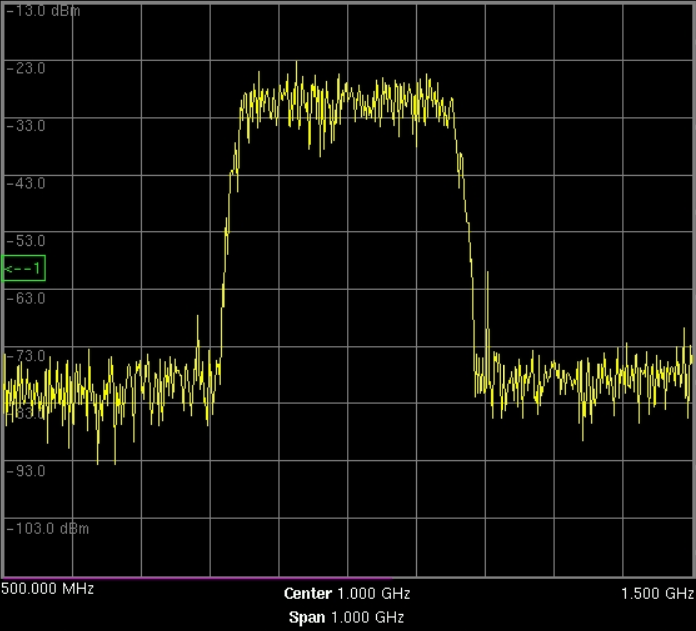Relevant Documents
 (544KB)
(544KB)
Next generation wideband wireless technologies (WLAN, UWB and 5G)
Background
Next generation wireless signal such as WLAN in the 6GHz band, Ultra-wideband (UWB) and 5G use orthogonal frequency division multiplexing (OFDM) to transmit high speed data over a wireless link. OFDM uses hundreds of carries with a simple narrowband modulation on each carrier. This means each carrier is more robust to interference but has a low transmission bandwidth, but by having 100’s of carriers you get a highspeed data transfer rate. The force multiplier!
Currently all WLAN signals are transmitted in the 2.4GHZ or 5GHz bands with a maximum bandwidth of 160MHz. The next generation of WLAN can operate in new frequency bands between 6GHz and 7GHz. And have a new maximum bandwidth of 360MHz.
5G cellular signals can be at millimeter frequencies, such as 28GHz and 39GHz, but also at several bands specified at less than 6GHz. The general rule is the lower the frequency, the further the signal will travel, but with the trade-off that the data throughput is reduced significantly. Cellular signals can have bandwidth between 20MHz and 1GHz.
Ultrawide Bandwidth typically uses three 500MHz channels that are frequency interleaved, therefor utilizing over 1.5GHz of spectrum within the 3.1 to 10.6GHz frequency range. One application of UWB is Wireless-USB. It is capable of sending 480 Mbit/s at distances up to 3 meters (9.8 ft) and 110 Mbit/s at up to 10 meters (33 ft).
The ultra-wide bandwidth spectrum is not only used in communications. It can also be used for "see-through-the-wall" precision radar-imaging technology, precision locating and tracking and precision time-of-arrival-based localization applications. A practical application for UWB, for example, enables secure keyless entry to your car, eliminating relay station attacks by measuring the distance between you and the vehicle.
Solution
A 9GS/s Proteus P9082M with option D02 is an ideal instrument for generating wideband signals up to 9GHz. With a sampling rate of 9GS/s and a Bandwidth of 9GHz provided by option D02 - it allows the instrument to generate signals in multiple Nyquist Zones with very wide bandwidths.
What is a Nyquist Zone? The Nyquist rate or zone is named after Harry Nyquist and states that the sampling rate should be twice the bandwidth of the signal's waveform being generated. So, if we sample at 9GS/s then the maximum bandwidth the AWG can produce is 4.5GHz. However additional signals will be produced - often referred to as images - at higher frequencies. These products are a function of the sampling rate and the signal being generated center frequency. If the instrument sample rate is 9GS/s and we generate a signal at 2GHz, then you will get a copy of the signal at 9GS minus 2GHz or at 7GHz. Without option DO2 this signal would be attenuated as the standard instrument low pass filters signal less than 4.5GHz.
Using this option D02, taking advantage of multiple Nyquist Zones and adjusting the sampling clock allows us to create a wide band signal anywhere in the 9GHz analog BW of the instrument. For example, if we wanted to create a signal at 8GHz, with a bandwidth of 1.5GHz, we would generate a signal at 2GHz in the first Nyquist zone with the sampling frequency set 6GS/s. The first Nyquist signal would appear at 2GHz, and the second Nyquist frequency would appear at 6GS-2GHz or 4GHz and the third Nyquist signal would be at 8GHz (6GS+2GHz).
The amplitude of the signal reduces at each Nyquist zone and is a function of the sampling mode used and would be in the region of 5db to 15db’s smaller in each zone.
We can generate all types of wideband signals utilizing our MatLab connectivity.
Example:
A 360MHz OFDM signal in the first Nyquist Zone

For more information on Tabors Arbitrary waveform generators or to schedule a demo please contact us.